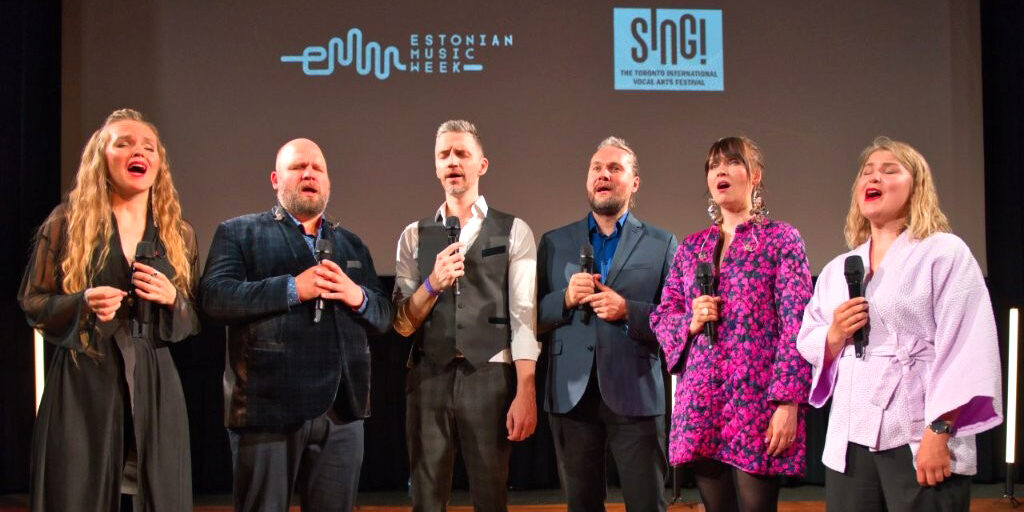Completed in 1985 by Enn Põldroos, the giant textile (titled Inimeste Elu or Life of the People), features a whirlwind of bold colours that coalesce at centre stage, morphing into monochrome human figures—a scene that, in Põldroos' mind, represents the complexity of human emotions.
The now 90-year-old artist is considered one of Estonia's painting masters. Upon his graduation from the Tallinn Art Institute in 1958, Põldroos' artistic adroitness in moving away from regulated social realist styles earned him a reputation as an artist who embraced innovation to the fullest extent.
Though his capacity to disturb the status quo grew more precarious after becoming the “vastutava sekretär” (secretary) for what was known as Eesti Nõukogude Kunstnike Liit (Union of Estonian Soviet Artists) in 1967, Põldroos continued to make his voice heard as a purveyor of individual expression. He has been a member of the Eesti Kunstnike Liit (Estonian Artist's Association) since 1959 and was elected its chairman in 1985. In addition to his artistic endeavours, Põldroos was highly active in the political realm as a champion of Estonian independence, believing that art could catalyze societal transformation.
Põldroos' sharp wit has also earned him recognition as an accomplished writer, having published various novels, stories, essays, memoirs, and art studies throughout his career.
Thematically speaking, Põldroos' style has evolved.
In 1973, he received the Kristjan Raud Art Award—the most prestigious art distinction in Estonia at the time—and received it again in 1983 and 1986. In 2013, he was awarded with the 34th Konrad Mägi medal.
Thematically speaking, Põldroos' style has evolved. “There are two constants in Enn Põldroos’ paintings of the late 1960s: the depiction of existential pressures and the sphere or container as an ever-present symbol,” according to the Haus Galleriiin Tallinn. “In the 1970s, a revolution took place in his work, and Põldroos’ paintings of the 1980s are unrecognizably different. Picture surfaces painted from edge to edge and smooth transitions of light and colour are replaced by purposeful sketchiness.” Following the introduction of computers into Estonia's society in the late 1990s and early 2000s, Põldroos transitioned to using the digital realm as an artistic medium.
Yet of the hundreds of paintings that Põldroos has completed, perhaps his most acclaimed work is Inimeste Elu.
Despite these changes, Põldroos' work, which carried an unwavering sense of poignancy, occupied a distinct space in the Estonian collective imagination. “…In many ways, my generation has grown up in the midst of Põldroos’ paintings and monumental works [and] their influence on my development and understanding of art has been extremely important,” said Estonian art historian Harry Liivrand. “…Since 1963, the main entrance above the vestibule wall of the Pelgulinna Gymnasium in Tallinn has been decorated with Põldroos’ murals, representing children's games and sports.” Speaking of spring and autumn exhibitions at the Tallinn Art Gallery, he added, “Põldroos' works were always hung in the main hall of the (gallery) in conspicuous places. However, they had strangely little to do with the canonical themes of official art….”.
Yet of the hundreds of paintings that Põldroos has completed, perhaps his most acclaimed work is Inimeste Elu. In a chapter of the Muinsuskaitse aastaraamat (Estonian Yearbook of Heritage Protection) covering notable events from 2011, author Marju Raabe describes the tapestry's creation process:
“The birth story of the festive stage curtain began with a competition organized by the Ministry of Culture of the Estonian SSR, which was won by the conceptual design of artist Enn Põldroos. Creating a tapestry depicting a person's life and emotions meant three years of hard work for the artist. A complicated composition of the curtain had to be put in place. Since there were no similar examples, the entire technological process had to be invented and put into motion… the weaving took place in three-metre-wide panels. Synchronous with the weaving, a cardboard working drawing ran behind the threads, which was marked to ensure that the tones coincided at the joints of the tiles. The artist had to make all the working drawings of 500 square metres by hand—a process that took over a year and a half. The tapestry was woven by Aino-Mall Tamm, Hilja Karu, and Maria Halling, weavers of Tallinn Art Combine ARS, for about two years. A unique device was designed to move the curtain.”
When the tapestry was finally completed, “the whole hall stood up and applauded,” Põldroos said. “It was a proud feeling then. I understood that the effort paid off.”
Indeed, the effort paid off again when we were able to view the tapestry in the “X-Ray” music video.
This article was written by Natalie Jenkins as part of the Local Journalism Initiative.




